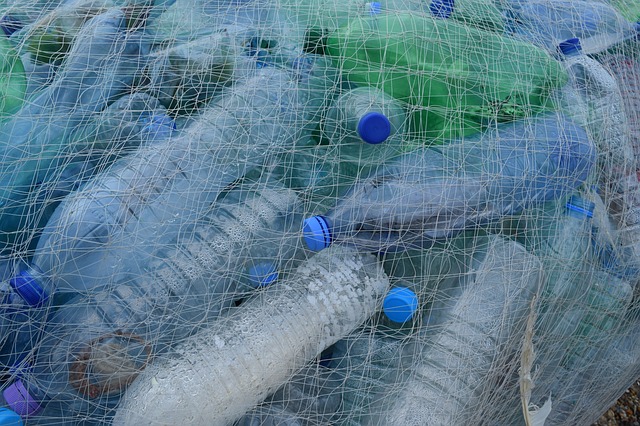by, theoretically, breaking down in weeks rather than centuries. It’s an important step forward for single-use packaging, but we still encourage you to look for plastic-free options.
Let’s dig into the realities of biodegradable plastics. Despite high hopes for these alternatives to help build a circular economy, there seems to be a lot of confusion regarding how to dispose of them properly at their end of life. Do you know the difference between these bioplastics?
Bioplastics Cover a Wide Ground
A wide range of materials falls under the umbrella of bioplastics, which are commonly defined as “biobased, biodegradable, or both.”

It might surprise you to know that a bioplastic can be non-biodegradable or contain no bio-based materials. It can even be 100% fossil-based. To complicate matters, a bioplastic “can be any combination of being partially bio-based, fully bio-based, non-bio-based, biodegradable, compostable or non-biodegradable, so long as it is not both non-bio-based and non-biodegradable.”
Let’s break it down a little further, shall we?
What Are Bioplastics?
Plastic that is fossil fuel-based and non-biodegradable is what we know as conventional plastic. It takes centuries for most of these plastics to breakdown in the environment, and oil-derived plastics leave toxic byproducts in the soil or water. But if a plastic is biobased and biodegradable or biobased and non-biodegradable, it can be classed as a bioplastic.
Bioplastics are commonly made of corn starch, cassava, or sugarcane. They provide an alternative to petroleum-based plastic and decompose faster and with fewer leftover toxins. But the idea that these plant-based plastics are natural carries with it big misconceptions. These plant-based plastics’ biomass content releases methane as it decomposes and they act like conventional plastics in the ocean, degrading into microplastics and harming marine life that mistakes it for food.
How do you recycle or dispose of bioplastics? Right now, many products in this category are labeled as Plastic #7 (or mixed). They will contaminate waste streams if put into the curbside bin in almost all locations in the U.S. Check the packaging, call your municipality, and browse TerraCycle for alternative recycling programs, but if no one accepts it, you have to toss it. Placing #7 plastic in your recycling bin can ruin plastic recycling processes at the materials recovery facility (MRF) that receives it.
Long-term, we need a stronger infrastructure to collect bioplastics and industrial composting facilities to close the loop. Like so much of our recycling infrastructure, plastic recycling is stuck in the late 20th Century.
What Is Biodegradable Plastic?
The term “biodegradable” can also mislead consumers because the process of breaking down the material in a compost pile depends heavily on humidity and temperature. Many plastics that carry this claim will only biodegrade in industrial conditions that reach hot enough temperatures. A few cities, such as San Francisco and Seattle, have invested to ensure their compost programs achieve industrial temperatures, but the vast majority have not. This highlights the need for caution about what you choose to recycle.
There are many types of biodegradable plastics, but the most common are starch-based polylactic acid (PLA) and polyhydroxyalkanoates (PHA). PLA can “look and behave like polyethylene (used in plastic films, packing, and bottles), polystyrene (plastic foam and plastic cutlery), or polypropylene (packaging, auto parts, textiles)” while PHA is created by microorganisms that produce plastic from carbon-rich organic material and is used in industrial applications, such as making injection-molded auto parts.
Oxodegradable plastics, or conventional petroleum-based plastics with additives that help them break down faster, are another subset of biodegradable plastics. California is the only state with labeling laws to keep the terms separate.
How do you recycle or dispose of biodegradable plastics? Contact your municipality to ask if they are eligible for local composting programs, consider TerraCycle’s Zero Waste Box for biodegradable or compostable plastic, or throw them away.
What Is Compostable Plastic?
Compostable plastics are another subset of biodegradable plastics, but while all compostable plastics are biodegradable, not all biodegradable plastics are compostable. These products are generally thought by consumers to be compost at home but that is not the case — it requires industrial composting. Most compostable plastics are biobased and designed to break down within three to six months.
Unfortunately, this confusion can lead to littering. While compostable plastics have a smaller carbon footprint, they don’t solve our throwaway culture.
How do you recycle or dispose of compostable plastics? Sadly, you can’t compost them. Like biodegradable plastics, compostable plastics do not necessarily break down in all commercial composting facilities. Talk to your municipality about existing or planned composting facilities that can process compostable plastics. Or consider TerraCycle’s option for compostable plastic.
For Now, Treat Bioplastics as Plastic
The reality is, we are creating bioplastics faster than the infrastructure we need for their safe, circular disposal — and multinational brands must lead the way on clear, transparent labeling to educate consumers. Until we establish an end-of-life solution for bioplastics, they’ll end up in the landfills or polluting waterways the same as conventional plastic.
That’s why it might be helpful to think of them — for now — as exactly that: plastic. Cut down your plastic use to make the biggest positive impact for the planet.
The post Bioplastics, Biodegradable Plastics, & Compostable Plastics: What’s the Difference? appeared first on Earth 911.








